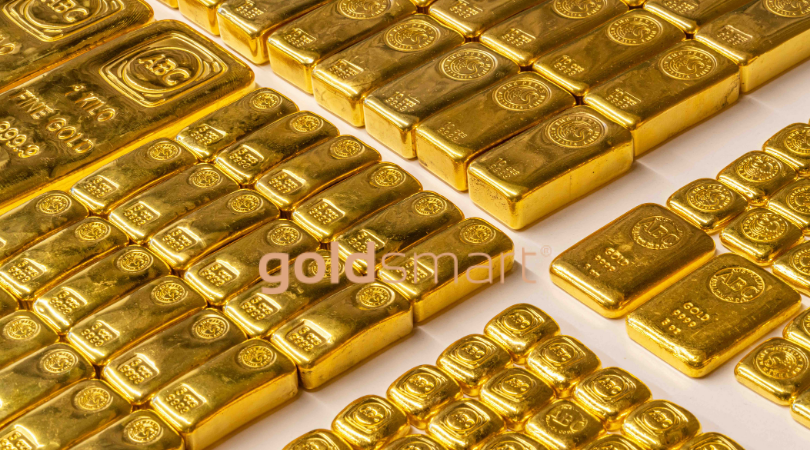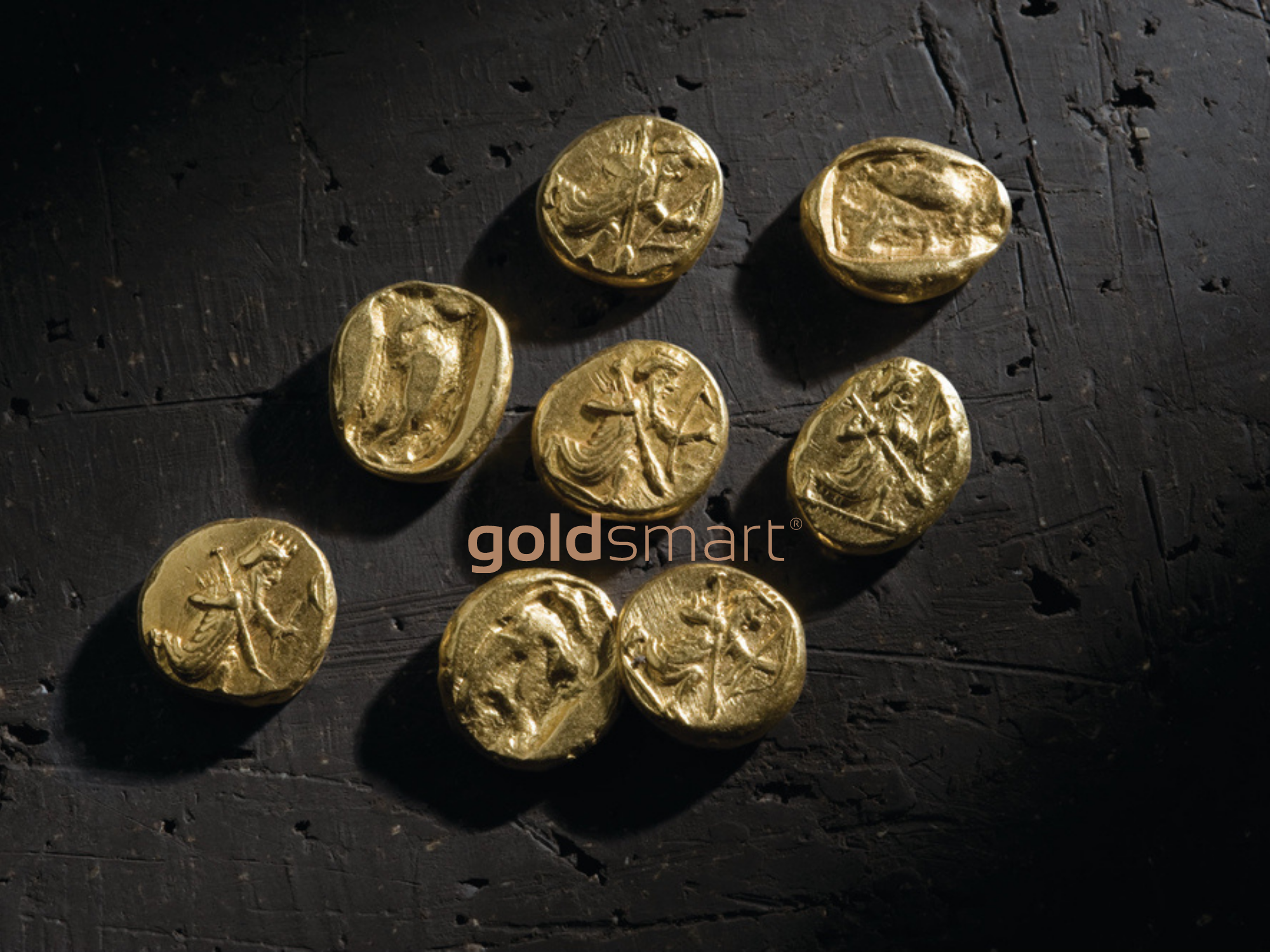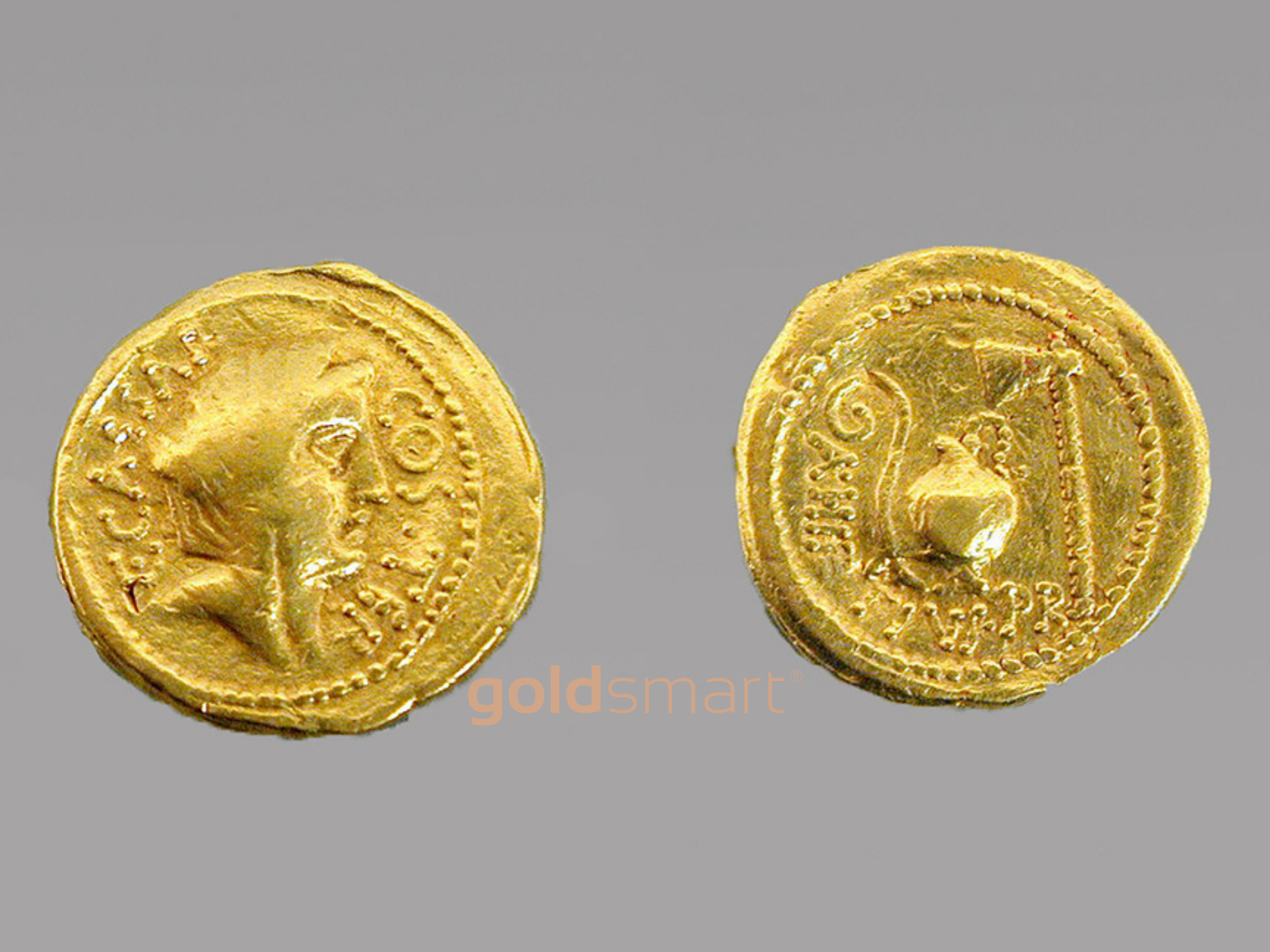
Gold has been around as a precious metal for centuries. The earliest gold fought over was well before the ancient Egyptians represented it in writing. Yet the same question that sits in the back of people’s minds today, exactly what makes gold so precious, was the same fundamental issue in ancient history as well. Gold per se doesn’t produce anything or transition into anything useful. It’s not a raw material that can be turned into a consumable. It doesn’t generate more growth on its own. Until high technology arrived, gold wasn’t even useful for tools because it was too soft of a metal to work with. However, gold as a holder of value and riches persisted anyways.
The Geological Origins of Gold
Gold as we know it today is a refined metal output that comes from a gold nugget or lode, the naturally formed version of gold. Gold nuggets are often found within rock, quartz in particular, in melted and slagged form. Much of this is due to the fact gold melts at very low temperatures and liquifies easily while other types of rock still stay hard. No surprise, gold then pools and reforms within crevices and cracks of other rock. As rocks are eroded, broken up, and separated, gold appears in the form of gold veins. Gold also falls apart with smaller rocks when washed apart by rain and the elements, ending up with smaller pieces in rivers and creeks as watersheds catch water from mountains and higher points.
Gold nuggets come in all shapes and sizes. Some show up as parts of strings, others as lumps or almost round balls, and many smaller pieces as flakes or chips. Some will still be attached to the quartz they bonded with or similar rock material and others float loosely in dirt. Regardless of hypotheses, study after study has found that the high majority of gold available was originally formed well underground in high heat and expelled upward through geological forces.
In their raw form, gold nuggets tend to be on the higher side of purity. Usually ranging anywhere from 20 to 22 carats of pure gold, gold nuggets will actually vary in quality by their location. For example, nuggets from Australia tend to be very high quality, even reaching as pure as 23 carats. Gold pieces from Alaska, on the other hand, are on the poor end of the spectrum, some being well into the lower quality of 20 carats. The largest gold nugget in recorded history was posted in 1869. Two fellows digging in Australia unearthed a 2,284 troy ounce unit weighing in at 71 kg. Nothing else has come close since although there have been a number of sizable finds and one of the more recent stones found in 1980.

The Ancient History of Gold
Gold was considered worth coveting as far back as at least 40,000 B.C. How is this known? Archaeology has literally found the proof. Gold flakes have been part of the artifact inventory recovered in ancient sites clearly located and placed within the Paleolithic area, including evidence of worked material, i.e. handled by humans. In just about every case gold was not treated as trash or common stone but instead protected and valued. This particular behavior has been worldwide versus being only localized to a few regions. Somehow, some way, people decided to apply a worth to gold beyond just being a shiny stone or rock they found while foraging.
The ancient Egyptians get the prize for being the most prolific with gold in terms of working it into amazing products, jewellery, symbols and even entire caskets for the dead. King Tutankhamun’s has probably become the most famous of all Egyptians with gold, particularly due to his iconic death mask, but gold was well-used by the Egyptians as far back as 3,000 B.C. The Egyptians went a step further, however, and associated set weight standards to gold pieces, developing an asset exchange value that redefined trade and economics in their time. For example, one piece of Egyptian gold of set size was worth 2.5 parts of silver set units. By doing this, Egyptians created economic predictability, which in turn allowed their trade markets to grow as everyone began to understand what their products were worth versus other products and services sharing a universal measurement (at least in the Egyptian world). Interestingly, however, the Egyptians were unlikely to have used gold directly as money in daily transactions. Barley and agricultural food products were worth far more in daily living.
Gold was used so heavily by the Egyptians, they both generated trade to accumulate more of it as well as mining it and pulled new reserves from the earth. This is known due to surviving gold maps showing the locations of gold mines in the ancient world as the Egyptians knew it. Instead, a different culture known as the Lydians and located in what is now modern Turkey was the first to apply gold as a daily currency.
The Beginning of Western Civilization
By the time the Greeks arrived on the scene, gold was already used for adornments of religious idols and temples, jewellery, awards, vases and cups and much more, all associated with richness and high value. Gold to the Greeks was akin to the immortal deities and what was the highest form of glory in the Greek world. They treated the yellow metal both as currency as well as a material with which to make some of the finest adornments. When the City of Troy was rediscovered in the 1800s, much of the work centered around the amazing gold jewellery, items and artifacts that were being dug up and unearthed in the site being from the same time period as the Greeks. Unfortunately, that also probably resulted in a lot of archeological damage, but the gold was considered the prize of the dig for Heinrich Schliemann, one of the fathers of modern archaeology.
The Romans also put a currency value on gold and treated the gold metal as their highest form of exchangeable barter in markets and in riches. In fact, gold was a standard means of paying soldiers for the Roman generals, which meant the top officers needed constant financing as well as loot to keep their armies happy and marching. Gold coins with Julius Caesar’s profile as well as marking his death have been found and continue to be highly prized to this day as collector items. The Romans also took gold a step further during their reign; they made gold the means by which to claim tribute from conquered areas among other goods. Not only did this give the Romans a generic form of loot that was liquid and easily transferrable, it meshed with their current economy automatically, increasing Roman strength and value exponentially. Unfortunately, this also meant a good amount of indigenous art and crafts were destroyed in the process to turn into Roman loot.

The Columbian Exchange
The Discovery of the New World by Columbus in 1492 brought a tremendous amount of change to what is now known as Central America. However, one particular aspect that the New World gave back, at first to the Spaniards and then to many others who reached the same shores was a tremendous amount of gold. Not only did many of the indigenous people of the Americas favor gold, they were very good at working with it. Once the Spaniards actually realized what they had on their hands with their first conquests of the Aztecs as well as in South America with the Incas, the gloves were taken off. Natives were enslaved and used as miners, gold was confiscated in every form possible, and entire civilizations disappeared as a result both from disease brought over from Europe as well as from subjugation. An amazing amount of gold was pumped out of the Americas back to Spain, even with tremendous loss of life as well as ships on the high seas. Some of those wrecks became famous in the 1980s when discovered again, and Spanish gold coins are still found on the beaches of Florida to this day. Gold flooded into Spain for years and funded an empire that was known for its largesse as well as riches. Even with entire fleets lost at sea during storms or attacks, Spain’s intake of gold was tremendous and impacted the country for years to come.
Colonial America
By the time the American colonies threw off the yoke to the British Crown and began to establish their first solid government monetary policy 15 years later, gold was already well-established as a country’s hard value worth in Europe. Exploration and colonization had made central countries in Europe incredibly wealthy, but war was also robbing them of those riches as well. Britain, Spain, Portugal, and Italy spent much of their wealth in epic wars ranging from 1750 to 1850, which consumed much of the capital of these states. In the meantime, the newly created United States had decided to shift to a gold standard in 1792.
Under what became famous as the Mint and Coinage Act, the U.S. tied its new currency to gold, and actual gold and silver coins were exchanged as currency in the country. Gold at this point stood at a value 1,500% more valuable than the same amount as silver, i.e. 1:15 ratio. This stabilized the market for gold versus silver, and the government was bound to exchange at the same rate regardless of other economic factors. However, some 70 years later during the U.S. Civil War, the Union government found that the law was too restrictive on its ability to raise funds for war efforts. It simply didn’t have enough precious metal to pay its bills. So, during 1862, the Union government switched to a paper currency, declared that as face value, and disconnected its legal money from a direct gold value. By 1873, silver was also nullified under the Coinage Act of 1873, wiping out the true silver dollar completely. Through to 1900, however, the U.S. still backed its currency in general with a gold dollar that was moved around for the country’s reserves.
The U.S. is notable during the same period because from the 1840s forward, a massive gold rush was occurring in the West. California made and broke the fates of thousands as people from all over migrated to the Pacific state simply to dig in the hills and find their treasure in raw gold. Most spent their diggings for supplies, food, and lodging as well as drink, and the real moneymakers of gold became the tradesmen and businesses that boomed to support the miners. Gold continued to be found in the West with the Klondike territory in the northwest as well as British Columbia, and miners moved ever northward into Alaska looking for the yellow metal in the earth.
Australia also hit the gold map during the same time period with a gold rush in the Outback. Areas of Western Australia that would have otherwise been barren became populated with miners, families, trades, and businesses, and most of the towns in the expansive Outback find their roots during this time period.

Global Wars and Bretton Woods
While World War I had a dramatic effect on reshaping Europe as well as colonies around the world, it was World War II that had the most influence on gold. During the beginning of World War II Nazi German forces made sovereign gold a critical target as the expanded quickly and conquered nearby European countries. The German war planners knew from their World War I experience that they were going to need hard currency to exchange for supplies and materials to keep the war effort going. This was the Achilles Heel that ultimately caused the German surrender in World War I. As a result, as countries were conquered, the Nazis raced towards the locations of the central banks to secure gold bar deposits and similar. Many of the low countries in Central Europe fell quickly as well as Eastern Europe. However, the Danish, French, and Norwegians made valiant attempts to save their gold, getting much of it moved to England. Spain tried the same but their gold was surreptitiously diverted to Moscow by the Russians who pretended to help. All of the Spanish sovereign gold disappeared as a result and funded the Russian war effort. What was moved to England ultimately ended up being moved to the U.S. and New York to keep the remaining sovereign gold safe from the Nazi encroachment. As a result, the U.S. for the first time became the economic leader of the world. This in turn set the stage for gold and related economic changes after World War II.
Post-war, the most significant economic shifts internationally were made under the Bretton Woods Agreements. These were a series of meetings defining new financial rules for the primary world power-brokers, but a key factor was tying gold to a U.S. dollar valuation. Again, with all the world’s leftover gold reserves and the one remaining economy that was incredibly strong after the War, the U.S. created the new monetary policy paradigm for the rest who were busy trying to rebuild their infrastructure.
The Bretton-Woods paradigm lasted until 1971 when the Vietnam War and President Nixon moved the U.S. off gold completely to redesign the U.S. economy from bankruptcy. From that point forward, no particular country was ever based on a gold standard again, and gold became very much a non-governmental investment asset, even though the countries and their central banks still hold gold today for financial reserves. This change likely made gold even more valuable and contributed to its modern times value spike because the precious metal has been allowed to operate as a free market asset disconnected from government policies and public markets. In a sense, gold became the perfect safe harbor for portfolio diversification. That has been evidenced more so in the 2000s than at any other time in history.
Closing Words
We hope this short history summary adds some context to why a portion of gold is recommended for anyone’s portfolio, either as bullion or jewellery. Despite what happens in the world, the precious metal has proven to be invaluable in times of need. Gold Smart provides New Zealanders an easy safe access to gold as well as a practical channel by which to liquidate it when ready. If you want to buy gold or sell it, give us a call or email, and we can help you value your gold, understand what you hold and what your options are without pressure or any requirement or commitment. We have been serving Kiwis for years with the New Zealand gold market, and our inventory of gold asset options is robust. If gold is on your mind, contact Gold Smart to consider your next move.